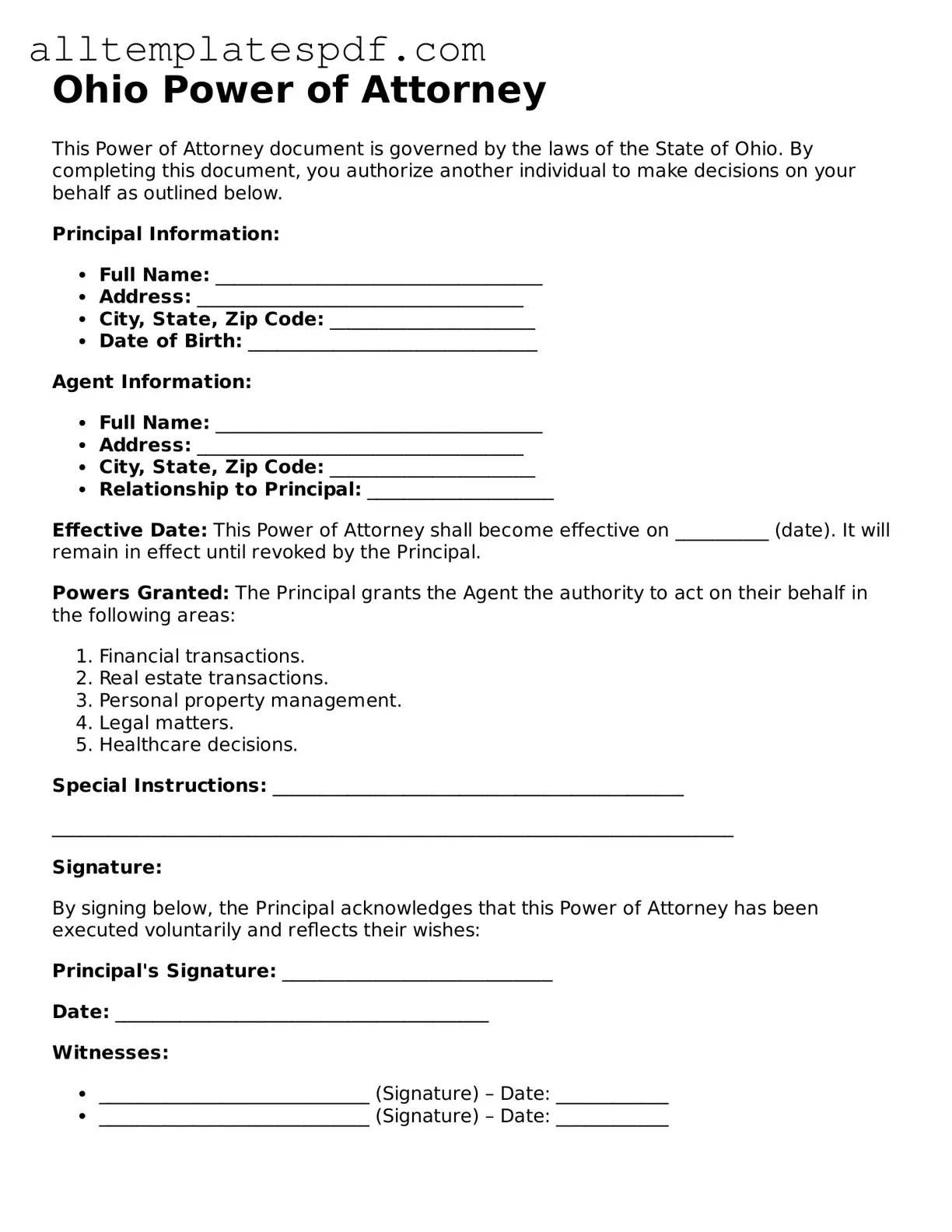Filling out a Power of Attorney (POA) form in Ohio can be a straightforward process, but it is not without its pitfalls. One common mistake individuals make is failing to specify the powers granted. A general power of attorney allows the agent to handle a wide range of financial matters, while a limited power of attorney restricts the agent's authority to specific tasks. If the form does not clearly outline these powers, it may lead to confusion or disputes later on.
Another frequent error is neglecting to date the document. A POA should always be dated when it is signed. Without a date, it becomes challenging to determine when the authority was granted, which can complicate matters if the document is ever questioned. Additionally, outdated POAs may not hold up if the principal's circumstances change, so keeping the document current is essential.
Some individuals overlook the importance of having witnesses or a notary public present during the signing of the POA. In Ohio, while it is not always required to have witnesses, having them can add an extra layer of validity to the document. Furthermore, notarization can help ensure that the document is recognized by financial institutions and other entities, making it easier for the agent to act on behalf of the principal.
Another mistake involves failing to communicate with the chosen agent. It is crucial for the principal to discuss their wishes and expectations with the person they appoint. Without this conversation, the agent may not fully understand their responsibilities or the principal's preferences, leading to potential conflicts or misunderstandings down the line.
People also sometimes forget to revoke any previous powers of attorney. If an individual has previously designated another agent, it is vital to formally revoke that authority before establishing a new one. Failing to do so can create confusion about which agent has the legal right to act on behalf of the principal, which can result in legal disputes.
Lastly, individuals may not consider the implications of their choice of agent. It is important to choose someone trustworthy and capable of managing the responsibilities that come with the role. Rushing this decision can lead to regrettable outcomes, especially if the agent does not act in the best interest of the principal. Taking the time to carefully select an agent can prevent many potential issues in the future.
